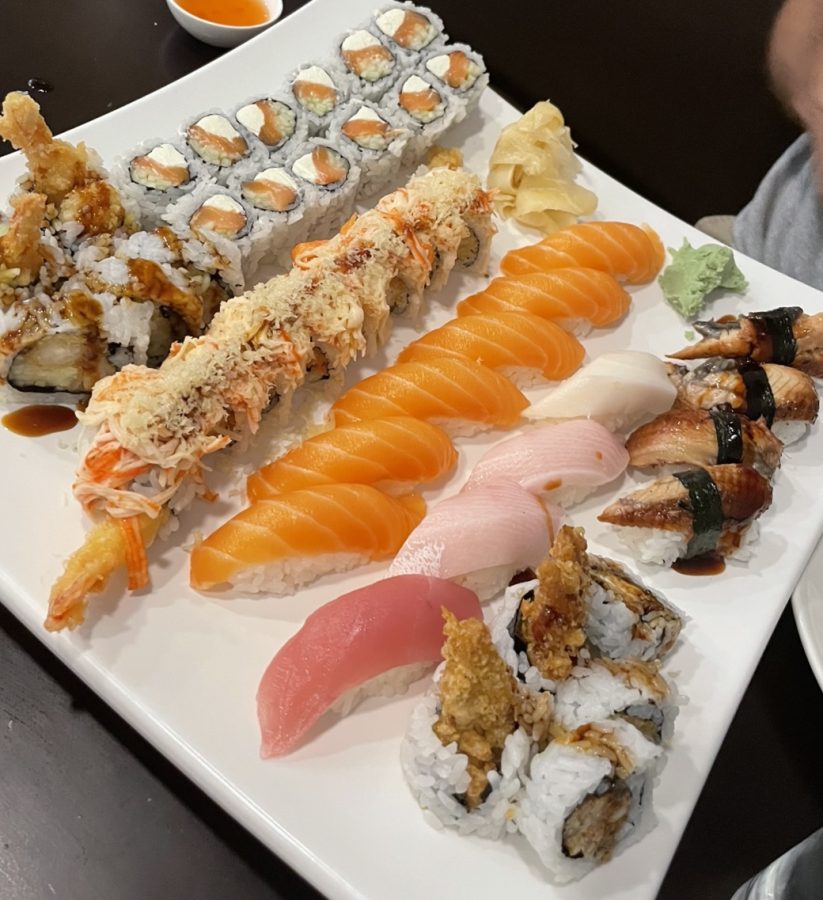A customer’s heaven and a fish’s hell: “All you can eat sushi”
Photo by Casey Isser
“All you can eat sushi” at Makoto Asian Cuisine in Avenel, NJ
Patrons stand mortified as the waiter walks over to the group of teenage boys with a plate of 100 pieces of sushi. The table is already covered with leftover wasabi and everyone at the table feels five pounds heavier than they did an hour ago, but they smile eagerly at the sight of more food. To them, this is just another night enjoying “All You Can Eat Sushi,” a trend that has a cult following within WHS.
“All You Can Eat Sushi” is a dining experience that provides customers with the most filling meal possible. For a fixed price at certain restaurants, the consumer is given a kitchen menu and a sushi menu. They put checks next to all the food they want such as shrimp tempura, spicy tuna rolls or chicken katsu. Provided that the customer finishes all the food they order, they are given another blank menu. Once again, they put a check next to all the food they want, which can include items they have already ordered. As long as they finish everything they eat, they can order as many rounds as they would like, hence why it is called “All You Can Eat.” This option is available at restaurants in the Westfield area like Makoto Asian Cuisine in Avenel, Sushi Palace in Summit and Sushi Time 898 in Cranford.
Junior Max Romano is a big fan of “All You Can Eat Sushi” and has it down to a science. Romano said that he will intentionally eat less throughout the day so that he has as big of an appetite as possible when he goes for “All You Can Eat Sushi.”
Romano also offered advice to anyone interested in trying this dining experience. He said, “Water makes the rice expand in your stomach so you feel full. That’s why you should stay away from it. I stick to Diet Coke when I go. It’s a cheat code.”
Romano is not alone in his love for “All You Can Eat Sushi.” Junior Julian Montez said, “I love the experience and I get more food for less money.”
Montez explained that at a normal restaurant, three rolls of sushi will cost just as much as the “All You Can Eat Sushi” price, and he will still be hungry there.
Despite their enjoyment of “All You Can Eat Sushi,” it has its consequences. Both Romano and Montez said that sometimes they will eat so much that they feel sick and it is not uncommon to throw up when the night is done from overeating.
“All You Can Eat Sushi” also attracts people even if they do not plan on consuming fish until they feel ill because it is easier financially. Junior Luke Jordan said, “It’s usually cheaper for all you can eat sushi rather than paying for individual rolls. Also, there’s no limit and I’m getting my money’s worth.”
This type of dining allows people to eat in quantities that are not usually possible. When describing his experience with “All You Can Eat Sushi,” junior Peter Del Re said, “On average I eat over 20 dumplings, at least 8 meat kabobs and around 6 rolls, which is 36 pieces of actual sushi.”
For big eaters that like to eat until they are full, “All You Can Eat Sushi” is a way to eat as much as they desire for a reasonable price without sacrificing the quality of the food.

